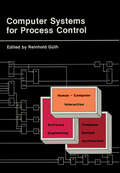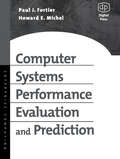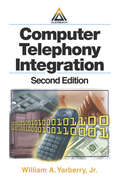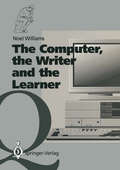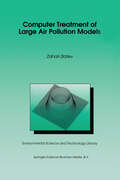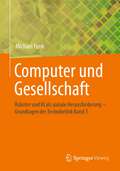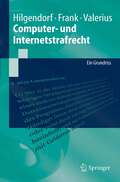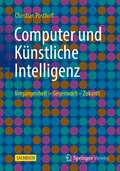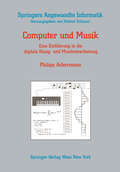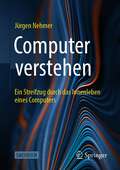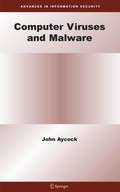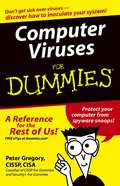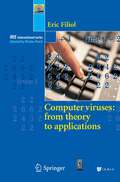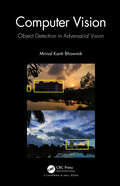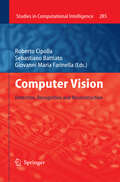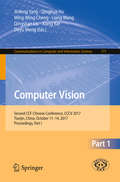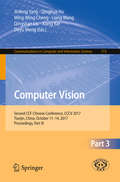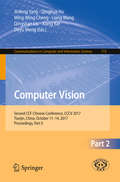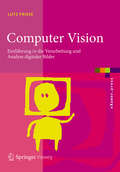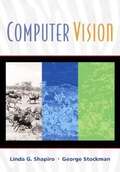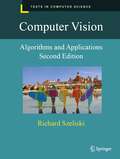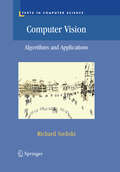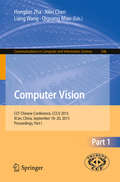- Table View
- List View
Computer Systems for Process Control
by Reinhold GüthThe Brown Boveri Symposia are by now part of a firm!ly established tradition. This is the ninth event in a series which was initiated shortly after Corporate Research was created as a separate entity within our Company; the Symposia are held every other year. The themes to date have been: 1969 Flow Research on Blading 1971 Real-Time Control of Electric Power Systems 1973 High-Temperature Materials in Gas Turbines 1975 Nonemissive Electrooptic Displays 1977 Current Interruption in High-Voltage Networks 1979 Surges in High-Voltage Networks 1981 Semiconductor Devices for Power Conditionling 1983 Corrosion in Power Generating Equipment 1985 Computer Systems for Process Control Why have we chosen these topics? At the outset we established certain selection criteria; we felt that a subject for a symposium should fulfill the following three requirements: It should characterize a part of a thoroughly scientific discipline; in other words it should describe an area of scholarly study and research. r - It should be of current interest in the sense that important results have recently been obtained and considerable research effort is presently underway in the international scientific community. - It should bear some relation to the scientific and technological activity of our Company. Let us look at the requirement "current interest": Some of the topics on the list above have been the subject of research for several decades, some even from the - v vi FOREWORD ginning of the century.
Computer Systems Performance Evaluation and Prediction
by Paul Fortier Howard MichelComputer Systems Performance Evaluation and Prediction bridges the gap from academic to professional analysis of computer performance.This book makes analytic, simulation and instrumentation based modeling and performance evaluation of computer systems components understandable to a wide audience of computer systems designers, developers, administrators, managers and users. The book assumes familiarity with computer systems architecture, computer systems software, computer networks and mathematics including calculus and linear algebra.· Fills the void between engineering practice and the academic domain's treatment of computer systems performance evaluation and assessment· Provides a single source where the professional or student can learn how to perform computer systems engineering tradeoff analysis· Allows managers to realize cost effective yet optimal computer systems tuned to a specific application
Computer Telephony Integration
by William A. Yarberry Jr.Since the publication of the first edition, the CTI world has changed significantly. Where it was once focused on the integration of voice systems with computers, the focus is now on IP-based voice, or converged networks and services. Today, the telcos are upgrading their systems from circuit-switched to IP-based packet-switched networks. Companies
The Computer, the Writer and the Learner
by Noel WilliamsComputers are gradually infiltrating all stages of the writing process. Increasingly, teachers, writers, students, software developers, technical authors, and computer scientists need to learn more about the effective use of computers for writing. This book discusses how computers can help support writing. It explores the issues associated with using computers to train and help writers, concentrating on computational and user aspects and reviewing practical, economic and institutional issues. Noel Williams balances theoretical and practical concerns, to meet the needs of researchers and practising trainers of writing. There is also a brief evaluation available software products, together with advice about the major considerations and pitfalls of working on custom-made software. The book is based on five years of research by the Communication and Information Research Group (CIRG) at Sheffield City Polytechnic into the value of computer-based approaches to training and helping writers. The work was funded and supported by the Training Agency, IBM, AT&T, Rolls Royce, NAB and GEC. The Computer, the Writer and the Learner is for people who are using, or are thinking of using, computers to teach or support writing, and for designers of computer-based writing systems. Many such people are unaware of the nature and use of existing systems, and of the possibilities they offer. Developers often lack detailed knowledge of other projects and of the range of users' needs. Although the bias of the book is towards the teacher, trainer and student, most of the content deals with issues that developers will want to know about.
Computer Treatment of Large Air Pollution Models (Environmental Science and Technology Library #2)
by Zahari Zlatev"Models are often the only way of interpreting measurements to in vestigate long-range transport, and this is the reason for the emphasis on them in many research programs". B. E. A. Fisher: "A review of the processes and models of long-range transport of air pollutants", Atmospheric Environment, 17(1983), p. 1865. Mathematical models are (potentially, at least) powerful means in the efforts to study transboundary transport of air pollutants, source-receptor relationships and efficient ways of reducing the air pollution to acceptable levels. A mathematical model is a complicated matter, the development of which is based on the use of (i) various mechanisms describing mathematically the physical and chemical properties of the studied phenomena, (ii) different mathematical tools (first and foremost, partial differenti al equations), (iii) various numerical methods, (iv) computers (especially, high-speed computers), (v) statistical approaches, (vi) fast and efficient visualization and animation techniques, (vii) fast methods for manipulation with huge sets of data (input data, intermediate data and output data).
Computer und Gesellschaft: Roboter und KI als soziale Herausforderung – Grundlagen der Technikethik Band 3
by Michael FunkWelche Wirkungen haben Robotik und Künstliche Intelligenz (KI) auf die Gesellschaft? Wie verändern Algorithmen und Machine Learning unser soziales Umfeld? Vor welchen ethischen Herausforderungen stehen wir? Vorliegendes Buch bietet zu diesen und weiteren Fragen systematische Analysen. Allgemeine und spezielle Roboterkonzepte von Androiden über Social Robots bis hin zu kollaborativen Industrierobotern werden vorgestellt. Hinzu treten Drohnen im militärischen und zivilen Einsatz sowie diverse Formen der Mensch-Maschine-, Tier-Maschine- und Pflanze-Maschine-Interaktion. Verschiedene Begriffe und Paradigmen der KI werden auch abseits der Informatik herausgearbeitet, reale und spekulative Entwicklungen eingeordnet. Vor diesem Hintergrund geraten ethisch-gesellschaftliche Brennpunkte in den Blick. Beispiele, Aufgaben, vertiefende Infos zu Hintergründen und Übersichten laden zum kritischen Weiterdenken ein. Es bildet den dritten, in sich abgerundeten Teil der Buchreihe Grundlagen der Technikethik.Haben wir die Zukunft, die wir brauchen, und brauchen wir die Zukunft, die wir haben?
Computer- und Internetstrafrecht: Ein Grundriss (Springer-Lehrbuch)
by Eric Hilgendorf Thomas Frank Brian ValeriusDie moderne Informations- und Kommunikationstechnologie stellt das Recht vor neue Herausforderungen. Das Lehrbuch vermittelt einen umfassenden und zugleich detaillierten Überblick über das Computer- und Internetstrafrecht, angefangen vom klassischen Computerbetrug und Hacking von Daten bis hin zu den jüngsten kriminellen Erscheinungsformen wie Domain-Hijacking und Phishing. Darüber hinaus widmet es sich auch künftigen Entwicklungen, vor allem der zunehmenden Internationalisierung des Rechts auf diesem Gebiet.
Computer und Künstliche Intelligenz: Vergangenheit - Gegenwart - Zukunft
by Christian PosthoffDas Buch beginnt mit einer Erklärung der menschlichen Intelligenz und der Beschreibung von Intelligenztests. Die Künstliche Intelligenz, die auf Computerprogrammen beruht, beginnt mit der Dartmouth – Konferenz 1956, an der sich berühmte Informatiker dieser Zeit beteiligten. Diese damit eingeleitete Entwicklung wurde von großen Fortschritten der Kybernetik und der Spieltheorie begleitet.Es folgen Beschreibungen wichtiger Methoden und Anwendungen:Maschinelles Lernen und Neuronale Netze Sehr publikumswirksam waren die Entwicklungen von Programmen für strategische Spiele, die nach einem kurzen Training die jeweiligen Weltmeister besiegen konnten. Die Sprachübersetzer von Google und DeepL sind mittlerweile vielen bekannt. Es wird erklärt, wie intelligente Systeme mit Datenbanken zusammenarbeiten, wie beliebige Daten digitalisiert werden können. Große Mengen an Daten werden unter dem Stichwort „Big Data“ behandelt. Ausführlich beschrieben werden die Bildverarbeitung, die Erkennung von Tumoren und Viren. Robotik ist ein weiterer Punkt, der ausführlich dargestellt wird. Roboter in der Chirurgie und in der Pflege sind ebenfalls sehr bedeutsam. „Exotische Ausreißer“ sind die Anwendungen in der Kunst. Sehr bedeutsam für die zukünftige Entwicklung sind Anwendungen in der Rechtssprechung.
Computer und Musik: Eine Einführung in die digitale Klang- und Musikverarbeitung (Springers Angewandte Informatik)
by Philipp AckermannComputer verstehen: Ein Streifzug durch das Innenleben eines Computers
by Jürgen NehmerDieses Sachbuch ist eine leicht verständliche Einführung in die grundsätzliche Arbeitsweise von modernen Computern und Computernetzen, das keine Vorkenntnisse voraussetzt. Es richtet sich an neugierige, technisch interessierte Computer-Laien, aber auch an Schüler vor ihrer Berufswahl und Personen, die sich für eine berufliche Laufbahn im IT-Bereich interessieren.Der in 16 übersichtlichen Kapiteln gestaltete Streifzug durch das Innenleben der modernen Computerwelt beginnt bei der Hardware-Architektur eines Computers und führt über Betriebssysteme und Computernetzwerke mit Schwerpunkt Internet bis hin zu Internetanwendungen und den zugrunde liegenden Softwaretechnologien.Eine Besonderheit des Sachbuches ist dessen Fokussierung auf grundlegende Konzepte aus der Computerwelt. Fachtermini werden sparsam benutzt, dann aber auch erklärt. Auf produkt- und herstellerspezifische Details wird nur eingegangen, wenn sie sich als Quasi-Standards in heutigen Computersystemen durchgesetzt haben. Notwendige mathematische Betrachtungen zur Zahlendarstellung in Computern übersteigen nicht das Niveau elementarer Schulmathematik.
Computer Viruses and Malware (Advances in Information Security #22)
by John AycockOur Internet-connected society increasingly relies on computers. As a result, attacks on computers from malicious software have never been a bigger concern. Computer Viruses and Malware draws together hundreds of sources to provide an unprecedented view of malicious software and its countermeasures. This book discusses both the technical and human factors involved in computer viruses, worms, and anti-virus software. It also looks at the application of malicious software to computer crime and information warfare. Computer Viruses and Malware is designed for a professional audience composed of researchers and practitioners in industry. This book is also suitable as a secondary text for advanced-level students in computer science.
Computer Viruses For Dummies
by Peter H. GregoryComputer viruses—just the thought of your trusty PC catching one is probably enough to make you sick. Thanks to the cyber-sickies who persist in coming up with new strains, there’s a major new cyberattack nearly every day. Viruses sneak in, usually through e-mail. Fortunately, there are ways to inoculate and protect your computer. Computer Viruses For Dummies helps you: Understand the risks and analyze your PC’s current condition Select, install, and configure antivirus software Scan your computer and e-mail Rid your computer of viruses it’s already caught Update antivirus software and install security patches Use firewalls and spyware blockers Protect handheld PDAs from viruses Adopt safe computing practices, especially with e-mail and when you’re surfing the Net Written by Peter H. Gregory, coauthor of CISSP For Dummies and Security + For Dummies, Computer Viruses For Dummies goes beyond viruses to explain other nasty computer infections like Trojan horses, HiJackers, worms, phishing scams, spyware, and hoaxes. It also profiles major antivirus software to help you choose the best program(s) for your needs. Remember, if you don’t protect your computer, not only do you risk having your computer infiltrated and your data contaminated, you risk unknowingly transmitting a virus, worm, or other foul computer germ to everybody in your address book! This guide will help you properly immunize your PC with antivirus software now and install updates and security patches that are like booster shots to keep your software protected against new viruses.
Computer Viruses For Dummies
by Peter H. GregoryComputer viruses—just the thought of your trusty PC catching one is probably enough to make you sick. Thanks to the cyber-sickies who persist in coming up with new strains, there’s a major new cyberattack nearly every day. Viruses sneak in, usually through e-mail. Fortunately, there are ways to inoculate and protect your computer. Computer Viruses For Dummies helps you: Understand the risks and analyze your PC’s current condition Select, install, and configure antivirus software Scan your computer and e-mail Rid your computer of viruses it’s already caught Update antivirus software and install security patches Use firewalls and spyware blockers Protect handheld PDAs from viruses Adopt safe computing practices, especially with e-mail and when you’re surfing the Net Written by Peter H. Gregory, coauthor of CISSP For Dummies and Security + For Dummies, Computer Viruses For Dummies goes beyond viruses to explain other nasty computer infections like Trojan horses, HiJackers, worms, phishing scams, spyware, and hoaxes. It also profiles major antivirus software to help you choose the best program(s) for your needs. Remember, if you don’t protect your computer, not only do you risk having your computer infiltrated and your data contaminated, you risk unknowingly transmitting a virus, worm, or other foul computer germ to everybody in your address book! This guide will help you properly immunize your PC with antivirus software now and install updates and security patches that are like booster shots to keep your software protected against new viruses.
Computer Viruses: from theory to applications (Collection IRIS)
by Eric FiliolA precise and exhaustive description of different types of malware from three different points of view, namely the theoretical fundamentals of computer virology, algorithmic and practical aspects of viruses and their potential applications to various areas.
Computer Vision: Object Detection In Adversarial Vision
by Mrinal Kanti BhowmikThis comprehensive textbook presents a broad review of both traditional (i.e., conventional) and deep learning aspects of object detection in various adversarial real-world conditions in a clear, insightful, and highly comprehensive style. Beginning with the relation of computer vision and object detection, the text covers the various representation ofobjects, applications of object detection, and real-world challenges faced by the research community for object detection task. The book addresses various real-world degradations and artifacts for the object detection task and also highlights the impacts of artifacts in the object detection problems. The book covers various imaging modalities and benchmark datasets mostly adopted by the research community for solving various aspects of object detection tasks. The book also collects together solutions and perspectives proposed by the preeminent researchers in the field, addressing not only the background of visibility enhancement but also techniques proposed in the literature for visibility enhancement of scenes and detection of objects in various representative real-world challenges.Computer Vision: Object Detection in Adversarial Vision is unique for its diverse content, clear presentation, and overall completeness. It provides a clear, practical, and detailed introduction and advancement of object detection in various representative challenging real-world conditions.Topics and Features:• Offers the first truly comprehensive presentation of aspects of the object detection in degraded and nondegraded environment.• Includes in-depth discussion of various degradation and artifacts, and impact of those artifacts in the real world on solving the object detection problems.• Gives detailed visual examples of applications of object detection in the real world.• Presents a detailed description of popular imaging modalities for object detection adopted by researchers.• Presents the key characteristics of various benchmark datasets in indoor and outdoor environment for solving object detection tasks.• Surveys the complete field of visibility enhancement of degraded scenes, including conventional methods designed for enhancing the degraded scenes as well as the deep architectures. • Discusses techniques for detection of objects in real-world applications.• Contains various hands-on practical examples and a tutorial for solving object detection problems using Python.• Motivates readers to build vision-based systems for solving object detection problems in degraded and nondegraded real-world challenges.The book will be of great interest to a broad audience ranging from researchers and practitioners to graduate and postgraduate students involved in computer vision tasks with respect to object detection in degraded and nondegraded real-world vision problems.
Computer Vision: Object Detection In Adversarial Vision
by Mrinal Kanti BhowmikThis comprehensive textbook presents a broad review of both traditional (i.e., conventional) and deep learning aspects of object detection in various adversarial real-world conditions in a clear, insightful, and highly comprehensive style. Beginning with the relation of computer vision and object detection, the text covers the various representation ofobjects, applications of object detection, and real-world challenges faced by the research community for object detection task. The book addresses various real-world degradations and artifacts for the object detection task and also highlights the impacts of artifacts in the object detection problems. The book covers various imaging modalities and benchmark datasets mostly adopted by the research community for solving various aspects of object detection tasks. The book also collects together solutions and perspectives proposed by the preeminent researchers in the field, addressing not only the background of visibility enhancement but also techniques proposed in the literature for visibility enhancement of scenes and detection of objects in various representative real-world challenges.Computer Vision: Object Detection in Adversarial Vision is unique for its diverse content, clear presentation, and overall completeness. It provides a clear, practical, and detailed introduction and advancement of object detection in various representative challenging real-world conditions.Topics and Features:• Offers the first truly comprehensive presentation of aspects of the object detection in degraded and nondegraded environment.• Includes in-depth discussion of various degradation and artifacts, and impact of those artifacts in the real world on solving the object detection problems.• Gives detailed visual examples of applications of object detection in the real world.• Presents a detailed description of popular imaging modalities for object detection adopted by researchers.• Presents the key characteristics of various benchmark datasets in indoor and outdoor environment for solving object detection tasks.• Surveys the complete field of visibility enhancement of degraded scenes, including conventional methods designed for enhancing the degraded scenes as well as the deep architectures. • Discusses techniques for detection of objects in real-world applications.• Contains various hands-on practical examples and a tutorial for solving object detection problems using Python.• Motivates readers to build vision-based systems for solving object detection problems in degraded and nondegraded real-world challenges.The book will be of great interest to a broad audience ranging from researchers and practitioners to graduate and postgraduate students involved in computer vision tasks with respect to object detection in degraded and nondegraded real-world vision problems.
Computer Vision: Detection, Recognition and Reconstruction (Studies in Computational Intelligence #285)
by Roberto Cipolla Sebastiano Battiato Giovanni Maria FarinellaComputer vision is the science and technology of making machines that see. It is concerned with the theory, design and implementation of algorithms that can automatically process visual data to recognize objects, track and recover their shape and spatial layout. The International Computer Vision Summer School - ICVSS was established in 2007 to provide both an objective and clear overview and an in-depth analysis of the state-of-the-art research in Computer Vision. The courses are delivered by world renowned experts in the field, from both academia and industry, and cover both theoretical and practical aspects of real Computer Vision problems. The school is organized every year by University of Cambridge (Computer Vision and Robotics Group) and University of Catania (Image Processing Lab). Different topics are covered each year. A summary of the past Computer Vision Summer Schools can be found at: http://www.dmi.unict.it/icvss This edited volume contains a selection of articles covering some of the talks and tutorials held during the first two editions of the school on topics such as Recognition, Registration and Reconstruction. The chapters provide an in-depth overview of these challenging areas with key references to the existing literature.
Computer Vision: Second CCF Chinese Conference, CCCV 2017, Tianjin, China, October 11–14, 2017, Proceedings, Part I (Communications in Computer and Information Science #771)
by Jinfeng Yang, Qinghua Hu, Ming-Ming Cheng, Liang Wang, Qingshan Liu, Xiang Bai and Deyu MengThis three volume set, CCIS 771, 772, 773, constitutes the refereed proceedings of the CCF Chinese Conference on Computer Vision, CCCV 2017, held in Tianjin, China, in October 2017. The total of 174 revised full papers presented in three volumes were carefully reviewed and selected from 465 submissions. The papers are organized in the following topical sections: biological vision inspired visual method; biomedical image analysis; computer vision applications; deep neural network; face and posture analysis; image and video retrieval; image color and texture; image composition; image quality assessment and analysis; image restoration; image segmentation and classification; image-based modeling; object detection and classification; object identification; photography and video; robot vision; shape representation and matching; statistical methods and learning; video analysis and event recognition; visual salient detection.
Computer Vision: Second CCF Chinese Conference, CCCV 2017, Tianjin, China, October 11–14, 2017, Proceedings, Part III (Communications in Computer and Information Science #773)
by Jinfeng Yang, Qinghua Hu, Ming-Ming Cheng, Liang Wang, Qingshan Liu, Xiang Bai and Deyu MengThis three volume set, CCIS 771, 772, 773, constitutes the refereed proceedings of the CCF Chinese Conference on Computer Vision, CCCV 2017, held in Tianjin, China, in October 2017. The total of 174 revised full papers presented in three volumes were carefully reviewed and selected from 465 submissions. The papers are organized in the following topical sections: biological vision inspired visual method; biomedical image analysis; computer vision applications; deep neural network; face and posture analysis; image and video retrieval; image color and texture; image composition; image quality assessment and analysis; image restoration; image segmentation and classification; image-based modeling; object detection and classification; object identification; photography and video; robot vision; shape representation and matching; statistical methods and learning; video analysis and event recognition; visual salient detection.
Computer Vision: Second CCF Chinese Conference, CCCV 2017, Tianjin, China, October 11–14, 2017, Proceedings, Part II (Communications in Computer and Information Science #772)
by Jinfeng Yang, Qinghua Hu, Ming-Ming Cheng, Liang Wang, Qingshan Liu, Xiang Bai and Deyu MengThis three volume set, CCIS 771, 772, 773, constitutes the refereed proceedings of the CCF Chinese Conference on Computer Vision, CCCV 2017, held in Tianjin, China, in October 2017. The total of 174 revised full papers presented in three volumes were carefully reviewed and selected from 465 submissions. The papers are organized in the following topical sections: biological vision inspired visual method; biomedical image analysis; computer vision applications; deep neural network; face and posture analysis; image and video retrieval; image color and texture; image composition; image quality assessment and analysis; image restoration; image segmentation and classification; image-based modeling; object detection and classification; object identification; photography and video; robot vision; shape representation and matching; statistical methods and learning; video analysis and event recognition; visual salient detection
Computer Vision: Einführung in die Verarbeitung und Analyse digitaler Bilder (eXamen.press)
by Lutz PrieseDer Autor erläutert in dieser Einführung auf Bachelorniveau die in der Computer Vision verwendeten technischen Ausdrücke: Grundlagen des menschlichen Sehens, Farbe, exakte Begriffsbestimmungen zum Thema "Bild", Transformationen, lineare und nicht-lineare Filter, Fouriertransformation, Morphologie, Merkmale im Bild wie Kanten, Ecken, geometrische Formen mittels Hough-Transformation, diverse Hüllen und Skelettierung. Ferner höhere Merkmale wie SIFT, Shape-Context und statistische Merkmale, Texturmerkmale. Die Bestimmung von Segmenten (zusammenhängende Regionen ähnlicher Farben oder Grauwerte) wird in einem eigenen Kapitel ausführlich behandelt.
Computer Vision
by George Stockman Linda G. ShapiroUsing a progressive intuitive/mathematical approach, this introduction to computer vision provides necessary theory and examples for practitioners who work in fields where significant information must be extracted automatically from images-- including those interested in multimedia, art and design, geographic information systems, and image databases, in addition to the traditional areas of automation, image science, medical imaging, remote sensing and computer cartography. The book provides a basic set of fundamental concepts, (representations of image information, extraction of 3D scene information from 2D images, etc.) algorithms for analyzing images, and discusses some of the exciting evolving application areas of computer vision. The approach is language and software independent, and includes two significant commercial case studies. Imaging and Image Representation. Binary Image Analysis. Pattern Recognition Concepts. Filtering and Enhancing Images. Color and Shading. Texture. Content-Based Image Retrieval. Motion from 2D Image Sequences. Image Segmentation. Matching in 2D. Perceiving 3D from 2D Images. 3D Sensing and Object Pose Computation. 3D Models and Matching. Virtual Reality. Case Studies. For practitioners in any field where information must be extracted automatically from images.
Computer Vision: Algorithms and Applications (Texts in Computer Science)
by Richard SzeliskiComputer Vision: Algorithms and Applications explores the variety of techniques used to analyze and interpret images. It also describes challenging real-world applications where vision is being successfully used, both in specialized applications such as image search and autonomous navigation, as well as for fun, consumer-level tasks that students can apply to their own personal photos and videos.More than just a source of “recipes,” this exceptionally authoritative and comprehensive textbook/reference takes a scientific approach to the formulation of computer vision problems. These problems are then analyzed using the latest classical and deep learning models and solved using rigorous engineering principles.Topics and features:Structured to support active curricula and project-oriented courses, with tips in the Introduction for using the book in a variety of customized coursesIncorporates totally new material on deep learning and applications such as mobile computational photography, autonomous navigation, and augmented realityPresents exercises at the end of each chapter with a heavy emphasis on testing algorithms and containing numerous suggestions for small mid-term projectsIncludes 1,500 new citations and 200 new figures that cover the tremendous developments from the last decadeProvides additional material and more detailed mathematical topics in the Appendices, which cover linear algebra, numerical techniques, estimation theory, datasets, and softwareSuitable for an upper-level undergraduate or graduate-level course in computer science or engineering, this textbook focuses on basic techniques that work under real-world conditions and encourages students to push their creative boundaries. Its design and exposition also make it eminently suitable as a unique reference to the fundamental techniques and current research literature in computer vision.
Computer Vision: Algorithms and Applications (Texts in Computer Science)
by Richard SzeliskiComputer Vision: Algorithms and Applications explores the variety of techniques commonly used to analyze and interpret images. It also describes challenging real-world applications where vision is being successfully used, both for specialized applications such as medical imaging, and for fun, consumer-level tasks such as image editing and stitching, which students can apply to their own personal photos and videos. More than just a source of “recipes,” this exceptionally authoritative and comprehensive textbook/reference also takes a scientific approach to basic vision problems, formulating physical models of the imaging process before inverting them to produce descriptions of a scene. These problems are also analyzed using statistical models and solved using rigorous engineering techniques. Topics and features: structured to support active curricula and project-oriented courses, with tips in the Introduction for using the book in a variety of customized courses; presents exercises at the end of each chapter with a heavy emphasis on testing algorithms and containing numerous suggestions for small mid-term projects; provides additional material and more detailed mathematical topics in the Appendices, which cover linear algebra, numerical techniques, and Bayesian estimation theory; suggests additional reading at the end of each chapter, including the latest research in each sub-field, in addition to a full Bibliography at the end of the book; supplies supplementary course material for students at the associated website, http://szeliski.org/Book/. Suitable for an upper-level undergraduate or graduate-level course in computer science or engineering, this textbook focuses on basic techniques that work under real-world conditions and encourages students to push their creative boundaries. Its design and exposition also make it eminently suitable as a unique reference to the fundamental techniques and current research literature in computer vision.
Computer Vision: CCF Chinese Conference, CCCV 2015, Xi'an, China, September 18-20, 2015, Proceedings, Part I (Communications in Computer and Information Science #546)
by Hongbin Zha Xilin Chen Liang Wang Qiguang MiaoThe two volumes CCIS 546 and 547 constitute the refereed proceedings of the CCF Chinese Conference on Computer Vision, CCCV 2015, held in Xi'an, China, in September 2015. The total of 89 revised full papers presented in both volumes were carefully reviewed and selected from 176 submissions. The papers address issues such as computer vision, machine learning, pattern recognition, target recognition, object detection, target tracking, image segmentation, image restoration, face recognition, image classification.
